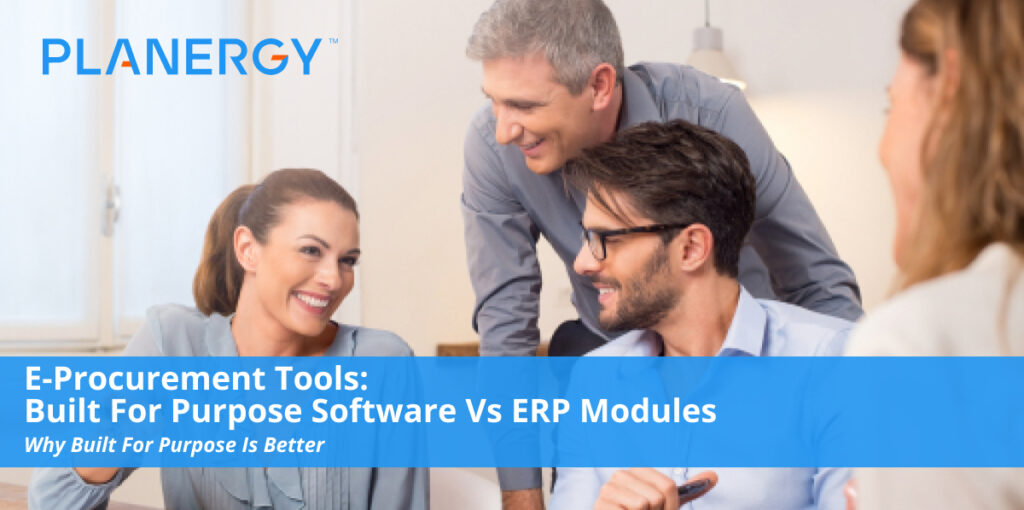In simple terms, e-procurement is an electronic data transfer that supports strategic, operational, and tactical operations.
The industry has been using either pyramid for a long time in one form or another. In the earliest iterations, it was done with paper and fax machine or mail, but today, most of it takes place over the internet.
Traditionally, procurement of material and supplies used done through a paper-based process that slowly migrated to an electronic option to print and store orders.
As e-commerce rose in popularity, procurement moved from a paper-based process to websites an email.
As internet technology continues to evolve, the e-catalog became front and center, thereby allowing procurement to take place through the internet.
In the current market with data security and advanced tools, the entire process of e-procurement is done over the internet.
E-procurement is an essential part of the purchasing professional’s arsenal. Nearly 90% of large companies use a dedicated tool. 86% of those surveyed say their company has deployed an e-procurement tool.
Of these, 60% are using module developed by a specialized procurement provider. 20% indicate they’re using a procurement module that is part of an ERP system and the remaining 20% another tool, most commonly an internal development.
The preference for using a specialized e-procurement solution over ERP technologies is based on a faster deployment and return on investment, better coverage of functional procurement requirements, and better procurement expertise.
Dedicated e-procurement tools are designed to support corporate procurement strategy. Completely automating the purchase-to-pay process allows procurement departments to create value by improving transparency, visibility, and control of a company’s spend.
While ERP modules can get the job done, opting for a dedicated e-procurement system generally offers more flexibility.
Procurement as a Function
Most organizations have a procurement department. These departments are responsible for purchasing raw material, office supplies and equipment, facility maintenance, and more.
Procurement professionals must know and understand the effects or my concept so they can design the most efficient and effective process possible.
Procurement handles the process of choosing suppliers, establishing payment terms, contract negotiations, and the actual purchasing of goods.
Procurement’s primary goal is to acquire all of the services, goods, and work that is vital to their organization at an affordable price. Purchasing is only a small part of procurement as a function. When the procurement team has the right
E-Procurement Tools and Applications
With an electronic data interchange system, procurement messages are exchanged between computers belonging to separate organizations.
The messages are transferred in batches and can be easily transmitted and stored. EDI is mostly used for order transmission, order confirmation, logistics information, and order invoicing.
Enterprise Resource Planning systems have separate modules to handle the procurement function.
These systems are modular software systems designed to help you integrate the main functional errors of your organization’s business processes into a single unified system.
Your ERP system includes core software components such as customer relationship management, supply chain management, finance & accounting, human resources, and more. Your organization can choose which core module to use based on which you feel are most critical to your business.
There are several internet-based tools and resources to help in the procurement process. Some of the most common applications include internet-based EDI, XML-based data exchange, and email.
The internet provides tools for e-sourcing, e-auctioning, e-tendering, e-ordering, and e-catalog.
E-sourcing tools help identify potential suppliers during the selection phase.
E-tendering tools send out tenders with procurement requirements, the supply schedule, contract terms, and so on.
E-auctioning tools bring together potential suppliers identified during the selection phase under a single umbrella to undertake and auctioning process.
E-auctioning tools operate under two separate mechanisms – an upward price mechanism for the selling organization and a downward price mechanism for the buying organization.
E-ordering tools are used to procure items. They are accessible to all employees of the organization. E-ordering tools are used mainly for ad-hoc purchases.
A web-based ERP tool is used for product-related purchases and is used solely but the procurement department. It falls under a planned process.
E-Procurement Benefits
A traditional procurement process begins with defining the purchase requirement.
From there, it moves on to finding potential suppliers, soliciting and evaluating the suppliers, negotiating and securing the contract, and then managing the contract for all purchases with the vendor.
Using the internet to handle the procurement process replaces everything with e-sourcing, e-tendering, reverse auction, e-ordering, and a web-based ERP.
Opting for a dedicated e-procurement solution removes the need to operate with various ERP modules, but still allows your systems to communicate with one another. Other e-procurement benefits include:
- Reduced costs incurred for goods and services associated with production
- Cost savings on the procurement process
- Cost benefits in establishing long-term relationships with suppliers
- Promotes transparency throughout the entire process, improving accountability throughout the organization.
Smarter Spending
With an e-procurement system, your organization will be able to completely transform your team’s spending practices by tracking spending, costs, and warranty information in real-time.
This encourages everyone to spend smarter while saving on everyday operating expenses. It’s much easier to conduct a spend analysis with a procurement service because you can get a look at the entire spending picture.
Better Cost Savings
With a dedicated e-procurement product, you’ll gain better visibility into your purchase order and non-purchase order spending throughout your company.
It makes it easier to force purchase requisitions and approved POs for all purchases, better allowing you to reduce operating costs and spend time on forging strategic purchasing strategies.
You’ll save money by lowering maverick spend, too.
You’ll be able to develop customized approval workflows based on your business’ needs to create a smooth automated approach that improves the purchasing experience.
The automation allows purchases to go through quickly while allowing the procurement staff to focus more of their time and effort on taking care of strategic sourcing, and less time on the paperwork and the purchasing elements themselves.
The streamlined process allows procurement to focus on soliciting RFPs and RFQs, along with contract management, once they’ve selected the vendor.
Improved spending visibility helps with budgeting because you’ll be able to spot opportunities to work with your suppliers differently, so you can leverage the information you have to negotiate better contract terms.
Stronger Supplier Relationship Management (SRM)
Working to optimize your supply chain and automating your business processes with the right e-procurement system lowers your transaction costs and decreases supply chain risks.
This allows you to build stronger and more strategic partnerships because you can work more closely with them and increase transparency.
With solid supplier management, your organization will reduce overall risk.
No matter what your purchasing process looks like, there’s an e-procurement software solution available to help you.
If you’re still relying on manual paper-based processes or outdated electronic procurement applications, you risk falling behind the competition.
The most efficient and effective procurement teams today rely on software like PLANERGY to not only manage the purchase process but to address risk management and inventory management, too.
Your procurement platform needs to be flexible and adapt to your organization’s needs as you grow – and PLANERGY can do just that.




